WMG News
TechWoman100 award for WMG researcher
 WMG Senior Research Fellow, Dr Mona Faraji-Niri, has been announced as a winner of a prestigious 2021 TechWoman100 award.
WMG Senior Research Fellow, Dr Mona Faraji-Niri, has been announced as a winner of a prestigious 2021 TechWoman100 award.
Dr Faraji-Niri started her career at Iran University of Science and Technology, and then continued as a lecturer at Pooyesh Institute of Higher Education, before joining WMG in 2018.
Dr Faraji-Niri is currently based in WMG’s Energy Innovation Centre specialising in battery modelling, battery management algorithms, electric vehicle powertrain modelling and control, and machine learning algorithms.
Dr Faraji-Niri explains: “It is an honour to be included in such a fantastic list! We need women at all levels to reshape the tech world. There’s no longer a mindset of ‘I can’t because I am a woman,’ all is possible by recognising and embracing your uniqueness, and having the passion and love for what you do.”
The TechWomen100 awards are the first of their kind to focus solely on the female tech talent pipeline and to also recognise the impact of champions, companies and networks that are leading the way for future generations of tech talent. Highlighting the achievements of these women is part of the WeAreTechWomen’s campaign to shine a spotlight on 1,000 future female leaders in technology by 2025.
See the full list of 2021 TechWoman winners here: TechWomen100 Awards | Winners 2020 (wearetechwomen.com)
New city climate change commission to drive forward low carbon targets
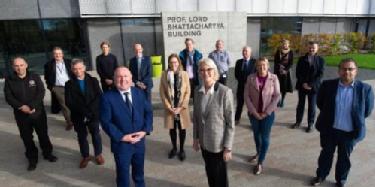 Senior leaders from organisations across Coventry met today to help shape and move forward actions to reduce the impact of climate change.
Senior leaders from organisations across Coventry met today to help shape and move forward actions to reduce the impact of climate change.
A new Coventry Climate Change Board will meet regularly to share policies, plans, good practice and work together collaboratively in an effort to keep the city on track for a zero carbon future.
The Board is chaired by Margot James, the former minister for culture, communications and creative industries and Executive Chair for WMG at the University of Warwick.
Senior representatives from businesses located in the city, public service providers and community organisations will work together on plans for the future of the city.
Margot James, Executive Chair at WMG, University of Warwick said:
“I want to be involved in the Board because I believe organisations must collaborate if we are to reduce our carbon footprint. This applies to the public sector and the commercial sector, charities and voluntary groups of all sizes.
“At WMG we are working with industry to develop solutions that will have a long-term impact on climate change, including electrification of transport from passenger cars to very light rail vehicles, and developing sustainable manufacturing processes.
“I want this Board to make a difference and cut through any blockages preventing action within and between the organisations we represent to develop collaborative solutions to sometimes complex issues.”
“Ultimately, we need to set out actions and win hearts and minds. We also want to communicate how residents of all ages can be involved. It’s about the wellbeing of future generations in the city.
“I expect more organisations will be invited to join the Board in the coming months.”
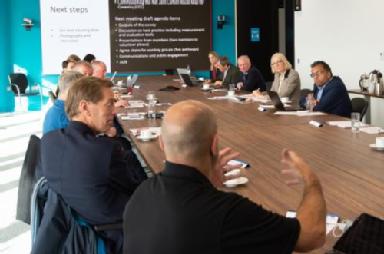 Cllr Jim O’Boyle, Cabinet Member for Jobs, Regeneration and Climate Change at the Council, added: “As a local authority we are applying innovative approaches and technologies but no one organisation can work alone to address a low carbon future.
Cllr Jim O’Boyle, Cabinet Member for Jobs, Regeneration and Climate Change at the Council, added: “As a local authority we are applying innovative approaches and technologies but no one organisation can work alone to address a low carbon future.
“I hope that as a Board and a combined group of organisations we can come together to identify new ways of working together.
“I’m sure that we will be able to deliver a range of cost-effective schemes to invest in a more sustainable future for the city.”
§ Last week Coventry held a COP26 Regional Roadshow highlighting a Transport Expo which was funded by the UK Government to celebrate and showcase the city’s innovative work in addressing climate change and decarbonising transport in the city.
§ Coventry has an A-rated CDP energy performance rating which is a national standard that is independently verified.
§ It has the highest number of electric charging points per head of population outside of London and will be the first city with an all-electric bus fleet from 2025.
The Council is investing in 5,000 solar panels on 41 Coventry buildings with public funding and there are many other schemes that city partners are supporting.
ENDS
17 NOVEMBER 2021
NOTES TO EDITORS
High-res images available at:
https://warwick.ac.uk/services/communications/medialibrary/images/november_2021/171121coventryclimatechangeboard_36.jpg
Caption: Front, Cllr O’Boyle with Margot James and partners from organisations across Coventry congregating outside the Prof. Lord Bhattacharyya building home to NAIC the National Automotive Innovation Centre at WMG, University of Warwick
Credit: Mark Radford Photography
https://warwick.ac.uk/services/communications/medialibrary/images/november_2021/171121coventryclimatechangeboard_29.jpg
Caption: The board congregating at WMG, University of Warwick
Credit: Mark Radford Photography
https://warwick.ac.uk/services/communications/medialibrary/images/november_2021/171121coventryclimatechangeboard_08.jpg
Caption: Margot James, Executive Chair of WMG, University of Warwick talking to the board
Credit: Mark Radford Photography
https://warwick.ac.uk/services/communications/medialibrary/images/november_2021/171121coventryclimatechangeboard_03.jpg
Caption: Cllr Jim O’Boyle talking to the board
Credit: Mark Radford Photography
For further information contact:
Alice Scott
Media Relations Manager – Science
University of Warwick
Tel: +44 (0) 7920 531 221
E-mail: alice.j.scott@warwick.ac.uk
Coventry schools to build future cities from recycled household items

· TeenTech is a national charity working with school children to help them consider a future in digital, science technology and engineering.
· Their TeenTech City of Tomorrow initiative is working with nine Coventry schools with the help of WMG, University of Warwick
· Experts from WMG will deliver advice to children on sustainable materials, and inspire them as they design and build their city of the future out of recyclable household items
· A few Cities will then be exhibited at The Coventry Transport Museum
TeenTech City of Tomorrow will see Coventry school children make a city of recyclable household items, with help from researchers at WMG, University of Warwick who will teach them all about sustainability. A select few ideas – buildings and technology- will then be exhibited at the Coventry Transport Museum.
TeenTech is a national charity engaging children and teenagers in Digital, Science, Engineering and Technology and their latest initiative has launched today, the 11th November, in Coventry, which will see nine schools in Coventry build a futuristic sustainable city out of recyclable household items.
As it’s ‘Cities, Regions and Built Environment’ day at the COP26 summit in Glasgow, researchers from WMG at the University of Warwick are helping children understand sustainability and its importance, by delivering an online session about sustainable materials and why it’s important we use them more for a greener future, thanks to funding from the University’s Innovative Manufacturing and Future Materials GRP.
The children will then have two weeks to build their cities from recyclable household items. Three researchers from WMG, University of Warwick will run workshops, educating the children in using natural products for sustainable solutions and how to dispose of products.
On the 25th November the researchers from will then provide feedback, before selecting a few of the buildings and ideas to be exhibited at the Coventry Transport Museum from the end of the month.
Dr Stuart Coles from WMG, University of Warwick comments:
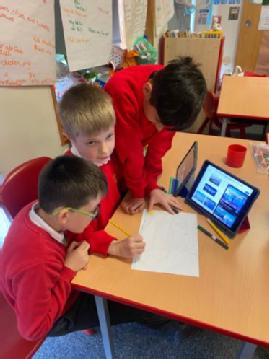
“Having spent my career researching how to reduce, reuse and recycle materials I am honoured to be a part of the TeenTech City of Tomorrow initiative, and look forward to seeing how creative the children can be in making a futuristic and environmentally friendly city.
“It is our children that will suffer from the damage we have caused and are causing to the planet, therefore it is imperative that we educate them from young age about sustainability and how they can create a cleaner and greener future for themselves and future generations, whilst we work out how we can change our ways to further prevent the climate crisis.”
Maggie Philbin, CEO of TeenTech comments:
“We want young people in Coventry to understand they can shape the future with their ideas. Young people think boldly, differently and inclusively and this is the thinking we need for a sustainable future. Tomorrow is very much a two-way event – experts will be sharing their knowledge, but we know that it will be the children who surprise everyone with their creativity, honesty and who will be the ones to challenge outdated thinking.
“Their buildings may be constructed from cardboard boxes but their ideas will be sophisticated and ones which should be seriously considered. They really are the architects, the engineers and the designers of the future. Let’s listen to them.”
Mrs Kaur, Class Teacher at Courthouse Green primary school comments:
"TeenTech is a great project to engage and enthuse the children and encourages them to consider how to be responsible about improving their environment. It has given the children the opportunity to think big about their world. their future and their role within it.
"The children are learning life skills, teamwork and are thinking outside the box to design and create cities that could effect change. The project is amazing! If I could give up a whole week to work on this, I would...it's real-life skills in the classroom."
Two children from year 5 at Courthouse Green Primary school have said:
"I love the project because it will help the future. It has made me think about climate change and how it is affecting our cities. In Coventry I see lots of litter and it gives our city a bad reputation. My team, Team Queen Tech are designing a treehouse from recycled materials that filters wastewater to use again." - Bhavika age 9
"We have designed a hotel for homeless people which is made from sustainable materials like bamboo." Sanjot Age 9
Composites award wins for WMG research
Two WMG research projects, Project AMICABLE and Project TUCANA, were recognised at the Composites Industry Awards this week.
Project AMICABLE, a 12-month Innovate UK funded project, which set out to produce a lightweight, permanently antimicrobial grab pole for use in public transport, won the Innovation in Composite Materials award.
transport, won the Innovation in Composite Materials award.
Researchers from WMG’s Lightweight Materials and Manufacturing team worked with, product designers Transport Design International (TDI), anti-microbial additive developers BioCote and Promethean Particles and the Health and Safety Executive (HSE), and manufacturers Composites Braiding Ltd (CBL), to produce lightweight composite grab-poles with an embedded anti-microbial property.
The anti-microbial grab poles can be used in a wide range of public transport applications, such as bus, tram, rail and underground, helping to reduce transmission of infections.
A second project involving experts from WMG, called Project Tucana and led by Jaguar Land Rover, was recognised in the Innovation in Composite Design category.
The APC funded project is an enabler for future generations of Battery Electric Vehicles (BEV), demonstrated through the redesign of the rear structure of a Jaguar I-Pace, the acclaimed Jaguar Land Rover (JLR) BEV, bringing together a consortium of world-leading academic and industry partners. Researchers and engineers from WMG’s Automotive Composites Research Centre helped to develop the manufacturing technology to design stiffer and lighter vehicle structures using light weight carbon fibre materials.
Read more about the Composites Industry Awards here: Composites Industry Awards | Composites UK
CO2 consuming concrete technology showcased at COP26 to be tested at University of Warwick
- Concrete contributes to 8% of global CO2e emissions, however Concrete4Change are on a mission to make concrete CO2 sinks rather than producers
- The CO2 sequestrating technology is being developed with the help of the School of Engineering and WMG SME group at the University of Warwick
- Researchers will help by testing the concrete which could revolutionise the concrete industry
- Concrete4Change won the award for Achieving Net Zero category at the UN Climate Change Cup last night at COP26
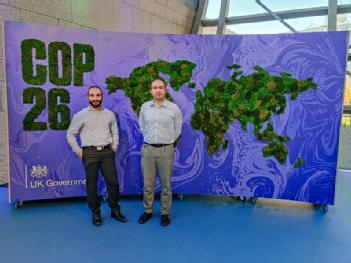 Technology developed by Concrete4Change that can make concrete a carbon sink rather than carbon producer will be trialled and tested by researchers from the University of Warwick. The technology which could revolutionise the concrete industry on a global scale, has been showcased and won an award at COP26.
Technology developed by Concrete4Change that can make concrete a carbon sink rather than carbon producer will be trialled and tested by researchers from the University of Warwick. The technology which could revolutionise the concrete industry on a global scale, has been showcased and won an award at COP26.
After water concrete is the most consumed material in the world, and accounts for 8% of global CO2e emissions. However, Concrete4Change Ltd. (C4C) are on a mission is to enable the concrete industry to transition from CO2 emitters to CO2 sinks, by developing a technology capable of removing significant amounts of CO2 from the atmosphere and absorbing it into concrete.
In fact, it was announced last night at COP26 that Concrete4Change have been announced as the winner of the Achieving Net Zero category of the 2021 UN Climate Change Challenge Awards.
The sequestration of CO2 results in the strength enhancement of concrete; therefore, reducing the amount of cement required to produce equivalent-strength concrete. Both CO2 sequestration and cement reduction can contribute to the reduction of concrete’s CO2 footprint. This technology has the potential to mitigate 2 billion tonnes of CO2e emissions, the equivalent of 4% of global CO2e emissions.
The School of Engineering and WMG centre High Value Manufacturing Catapult at the University of Warwick are proud to be supporting Concrete4Change, by undertaking essential testing for the company with the help of funding through Innovate UK and the DI4M programme.
Dr Reyes Garcia from the School of Engineering comments:
“As the world strives to reach zero-carbon goals, the construction industry and we civil engineers have a huge role to play to make concrete more sustainable. The cement we use to produce concrete contributes massively to CO2 emissions, and therefore we need to take drastic action now if the construction sector is to achieve its CO2 reduction goals. Here, at the School of Engineering, we are incredibly excited to support Concrete4Change by performing concrete technology and durability tests, which are critical to prove that the technology can be safely adopted by designers, contractors and concrete producers”.
Dave Myers from the WMG SME group at the University of Warwick comments:
“In order to make sure the concrete made by this innovative technology is as good, as if not better than previous standards we will be assisting Concrete4Change by completing testing and microscopical examination.
“Once testing has been completed the partnerships that C4C have made can help bring this technology to market and reinvent the concrete industry into a more sustainable and eco-friendlier one.”
Concrete4Change has built partnerships with other leading academic institutions as well as with some of the largest concrete producers in the world including Hanson Heidelberg, Kier, SIG, Morgan Sindall and Skanska.
Dr Sid Pourfalah, Founder and CEO of Concrete4Change comments:
“We are delighted to have the help to bring our unique technology to the market with help with the University of Warwick, not only are we showcasing our technology at COP26, but we have also been selected by Brazilian Ideiagov as one of the top 10 companies to tackle Latin America’s Net-Zero Challenge, bringing us hope that our technology is transferrable worldwide, and can help us shape tomorrow for future generations.”
C4C has also been selected by British Precast Federation as one of the top 3 most innovative companies and as one of the top 5 companies for Knowledge Transfer Network (KTN) Transforming Foundation Industries (TFI).
ENDS
11 NOVEMBER 2021
NOTES TO EDITORS
High-res images available at:
https://warwick.ac.uk/services/communications/medialibrary/images/november_2021/img_20211109_132635.jpg
Caption: From left to right, CTO Dr Michael Wise and Dr Sid Pourfalah, Founder and CEO of Concrete4Change at COP26
Credit: Conrete4Change
https://warwick.ac.uk/services/communications/medialibrary/images/november_2021/img_20211109_125514_003.jpg
Caption: COP26 flowers
Credit: Concrete4Change
Find out more about Concrete4Change here: https://www.concrete4change.com/
C4C selected for the prestigious Climate Challenge Cup (10th of November): https://lnkd.in/gfdmtWzZ
For further information please contact:
Alice Scott
Media Relations Manager – Science
University of Warwick
Tel: +44 (0) 7920 531 221
E-mail: alice.j.scott@warwick.ac.uk
Energy stored in electric car batteries could be used to power homes
With vehicle-to-grid (V2G) technology, electric vehicle (EV) batteries could store electricity - when there is an abundant supply - to power homes and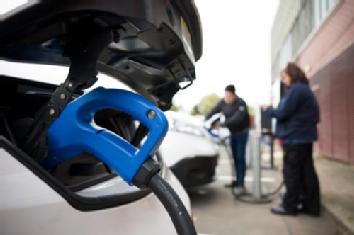 businesses and discharge it back to the national grid when it is most needed.
businesses and discharge it back to the national grid when it is most needed.
This enables better use of renewable energy, lower carbon footprint, less pressure on the grid and financial savings, which can help electric vehicle owners pay back their investment.
During the course of this year, the EV-elocity project has been deploying V2G chargers in a range of locations across England to as part of large-scale trials to gain technical, customer and commercial insights on the emerging technology. It is also investigating if, and how, additional use from V2G charging may affect EV battery life.
The project, led by Cenex, a not-for-profit consultancy specialising in delivery of low carbon vehicles and energy infrastructure projects also involves the Universities of Nottingham and Warwick; Leeds and Nottingham City Councils; and CrowdCharge, a platform that integrates and optimises smart electric vehicle charges. EV-elocity is funded by the Department for Business Energy and Industrial Strategy (BEIS) and the Office for Zero Emission Vehicles (OZEV), in partnership with Innovate UK, part of UK Research and Innovation.
Chris Rimmer, Infrastructure Strategy Lead at Cenex, said: “After restarting the project in mid-2020, we are delighted to be testing V2G with such a range of sites and hardware. We’ll be working hard over the coming months to examine the cost, carbon and conditioning benefits of V2G, and publish our results as they become available.”
Professor James Marco, from WMG at the University of Warwick comments:
“A number of consumers and vehicle manufacturers are concerned that V2G will disproportionably reduce battery life, representing a potential barrier for widespread adoption of V2G and consumer acceptance. Here at WMG, University of Warwick, we are excited to be researching novel new methods of managing the V2G charging process not just to mitigate battery degradation, but to potentially use V2G to extend battery life.”
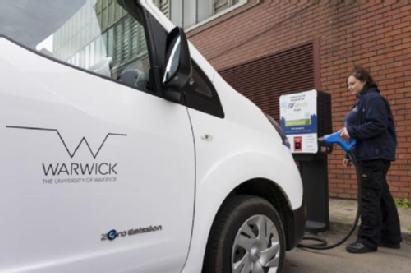 With V2G technology, EVs could help to support grid resilience when parked and plugged-in. Instead of installing huge and expensive community battery stores, an extensive network of EV batteries could be harnessed to absorb energy when renewable generation is plentiful and export it back to the grid during peak demand when carbon intensity is highest for a profit, making money back for users in the process.
With V2G technology, EVs could help to support grid resilience when parked and plugged-in. Instead of installing huge and expensive community battery stores, an extensive network of EV batteries could be harnessed to absorb energy when renewable generation is plentiful and export it back to the grid during peak demand when carbon intensity is highest for a profit, making money back for users in the process.
The project is installing multiple V2G charging demonstrators at sites owned by organisations -including city councils, universities and police forces - that employ large electric vehicle fleets. Latest data suggests that if the 5.3 million fleet vehicles on UK roads today were to switch to EV, it would save as much as 25 per cent of all UK transport emissions.
Dr Julie Waldron, Research Fellow at the University of Nottingham, who is studying user behaviour, said: “Company cars and vans tend to earn money while out on the road, but electric vehicles could also be a source of income when they’re parked up. We know cost is a major factor deterring mass adoption of electric vehicles, but if V2G charging helps EV owners get a quick return on their investment, it could make purchasing electric vehicles a much more attractive option to a bigger customer base.”
· With the biggest electric fleet of any local authority in England, Leeds City Council has installed 5 V2G chargers under the EV-elocity project
· The University of Nottingham, another user of EV fleets, has installed two V2G units on its main campus
· Cenex installed one V2G charger at Loughborough University Science and Enterprise Park, one charger at Worcestershire County Council and two chargers at West Midlands Police.
· University of Warwick installed three chargers on campus to be used by the Estates fleet
· Nottingham City Council, which also has a large electric vehicle fleet and a very ambitious target to become carbon neutral by 2028, is planning to install 40 units
Using data from V2G chargers and trackers in EV cars, and user behaviour analysis on the study, researchers are examining mobility patterns, EV charging requirements/trends, battery degradation, and electricity generation, storage and use.
“Understanding the patterns of vehicle usage will allow us to evaluate the best charging infrastructure required for EVs, for example the locations and type of charging points and plugs (which currently vary between car brands), compatibility with V2G, charging periods and energy demand, etc. This will enable us to rethink the system and inform the users’ decision-making process in order to maximise benefits for consumers and the planet.” Dr Waldron adds.
ENDS
10 NOVEMBER 2021
NOTES TO EDITORS
https://warwick.ac.uk/services/communications/medialibrary/images/november_2021/l1010256.jpg
Caption: A V2G charger on campus at the University of Warwick
Credit: EV-elocity
Caption: A V2G charger on campus at the University of Warwick
Credit: EV-elocity
https://warwick.ac.uk/services/communications/medialibrary/images/november_2021/l1010286.jpg
Caption: A V2G charger on campus at the University of Warwick
Credit: EV-elocity
Caption: A V2G charger on campus at the University of Warwick
Credit: EV-elocity
https://warwick.ac.uk/services/communications/medialibrary/images/november_2021/l1010293.jpg
Caption: A V2G charger on campus at the University of Warwick
Credit: EV-elocity
1. University of Nottingham
Researchers from the Transport, Mobility and Cities and the Building, Energy and Environment research groups are studying user behaviour in EV-elocity demonstrator trials. They have also developed a V2G case study that will be tested at the University Park Campus. The project fits in well with the University’s commitment to use innovative technologies to make its campuses smarter and more sustainable to enhance the user experience and reduce its carbon footprint. The campus’ infrastructures and services operate very much like those of a small town, so it is a great testbed for technology implementation prior to installation in real cities.
University Park campus uses different types of fleets, in terms of users, routines, parking location and dwell times. This behaviour data was analysed and correlated with other parameters such as routes and movement patterns, renewable energy availability on site, grid cost and grid energy carbon emissions to identify the most promising charging pattern and infrastructure to deliver financial and carbon savings, improve battery life and maximise local renewable energy consumption.
Under EV-elocity, two V2G units have been installed on University Park campus and will be collecting data until March 2022 to identify whether proposed usage delivers against the targets set.
https://www.ev-elocity.com/news/vehicle-to-grid-at-hallward-library-university-of-nottingham/
2. Cenex, Loughborough University Science and Enterprise Park
https://www.ev-elocity.com/news/the-uks-most-scenic-v2g-chargepoint-deployment/
3. Leeds City Council
https://www.ev-elocity.com/news/vehicle-to-grid-at-leeds-city-council/
Leeds has one of the largest public sector fleets of electric vehicles in the country and ambitions plans to continue its transition to a zero emission fleet as part of meeting a city-wide target to become the first net zero major city. This project is part of delivering on this ambition. There have been six V2G units installed in Leeds, one at our Parks & Countryside department headquarters at Farnley Hall and five at our Knowsthorpe Gate depot site. The chargers will be used by a range of different services vehicles across this sites with the Nissan Env-200’s utilised for the project having been fitted with telematics to capture data to feed into the projects assessment of the technology.
4. WMG University of Warwick
WMG is a world leading research and education group, transforming organisations and driving innovation through a unique combination of collaborative research and development, and pioneering education programmes.
As an international role model for successful partnerships between academia and the private and public sectors, WMG develops advancements nationally and globally, in applied science, technology and engineering, to deliver real impact to economic growth, society and the environment.
WMG’s education programmes focus on lifelong learning of the brightest talent, from the WMG Academies for Young Engineers, degree apprenticeships, undergraduate and postgraduate, through to professional programmes.
An academic department of the University of Warwick, and a centre for the HVM Catapult, WMG was founded by the late Professor Lord Kumar Bhattacharyya in 1980 to help reinvigorate UK manufacturing and improve competitiveness through innovation and skills development.
5. Worcestershire County Council
One vehicle-to-grid charger was installed at the headquarters of Worcestershire County Council, County Hall, in their underground staff car park. The test vehicle a 2016 Nissan Leaf is used by the council as a pool car for staff to make visits in the local area.
6. West Midlands Police
Two vehicle-to-grid chargers were installed at the mezzanine car park of the West Midlands Police Head Quarters. These units will be used to charge (and discharge) two Nissan Leafs (2016) that are part of the non-emergency response fleet based at the site in central Birmingham. These vehicles are used as pool cars by staff to attend non-urgent appointments and enquiries in the city and the surrounding area.
About EV-elocity:
The Project EV-elocity is part of the Vehicle-to-Grid (V2G) competition, funded by the Department for Business Energy and Industrial Strategy (BEIS) and the Office for Zero Emission Vehicles (OZEV), in partnership with Innovate UK, part of UK Research and Innovation.
The 20 V2G projects (8 feasibility studies, 4 collaborative research and development projects, and 8 real-world V2G trial projects) receive funding of £30m to develop the business proposition and the core technology to support V2G deployment in the UK, including its demonstration with large scale trials.
The 20 projects involve more than 50 industrial partners and research organisations from both the Energy and Automotive sectors, making it the largest and most diverse V2G activity in the world, trialling more than 500 vehicles and V2G charger units across UK.
The V2G projects represent a significant step towards the transition to a low carbon transportation and a smart energy system. Allowing EVs to return energy to the Power Grid when parked and plugged-in will increase Grid resilience, allow for better exploitation of renewable sources and lower the cost of ownership for EV owners, leading to new business opportunities and clear advantages for EV users and energy consumers.
For further information please contact:
Alice Scott
Media Relations Manager - Science
University of Warwick
Tel: +44 (0) 7920531221
E-mail: alice.j.scott@warwick.ac.uk
Aircraft engine noise pollution to be reduced thanks to novel maths of aero-acoustic simulations
- With ever-stricter noise regulations, aircraft and engine manufacturers are on a mission to reduce noise pollution from aircraft engines
- Novel aero-acoustic simulations that could be used to optimise the design of an aircraft engine and reduce noise will be made possible by Dr Ed Brambley from the University of Warwick
- Thanks to a £290,000 EPSRC grant, the work could revolutionise the way simulations are used in industry, with potential applications not only for aircraft noise but also in meteorology and weather forecasting
Computer simulations are used every day in engineering; however, Dr Ed Brambley will be looking at the maths behind the next generation of novel simulations, which can be used to reduce aircraft engine noise, thanks to a grant from the EPSRC.
Aircraft engines are loud (about 1000x louder than a pneumatic drill), and so designing aircraft engines and airplanes that are able to meet ever stricter noise regulations, whilst still being fuel efficient and cost effective, is a major challenge for aircraft and engine manufacturers.
However, thanks to a £290,000 grant from the EPSRC, Dr Ed Brambley, from WMG and the Department of Maths at the University of Warwick, will investigate the maths behind how computer simulations can be used to minimise the noise from aircraft engines, therefore reducing noise pollution.
Two numerical techniques specific to this project are called Finite Elements and Finite Differences. Both have their advantages and disadvantages: Finite Elements are often used to simulate solids, such as how bridges support weight, whereas Finite Differences are more commonly used to simulate waves, such as the sound produced by aircraft engines. Dr Ed Brambley noticed that the maths of some rather niche Finite Differences behaves rather like Finite Elements, and this funding will allow him to look at why, and how this can be used to make better simulations.
 Dr Ed Brambley, from WMG and the Department of Maths at the University of Warwick explains:
Dr Ed Brambley, from WMG and the Department of Maths at the University of Warwick explains:
“Numerical simulations of aircraft engine noise are used to optimise the design of an aircraft or engine before it is built and tested, but they can take weeks to run even on supercomputers. Companies such as Airbus, Boeing, and Rolls-Royce are interested in how best to simulate aircraft engine noise quickly, so they can compare different designs and better optimise them. I hope that this research will help them achieve this.”
Whilst simulations of sound in aircraft engines (Computational AeroAcoustics) is one of the applications in mind with this proposed research, the research could also have impact well beyond aircraft engine noise, as it addresses concerns about the fundamentals of numerical simulations, and has the potential to impact meteorology and weather forecasting, geophysics and the modelling of earthquakes and the structure of the earth, medical imaging scans, and anywhere else finite differences are commonly used.
ENDS
9TH NOVEMBER 2021
NOTES TO EDITORS
https://warwick.ac.uk/services/communications/medialibrary/images/september_2021/ed_brambley.jpg
Caption: Dr Ed Brambley, WMG/Maths University of Warwick
Credit: WMG, University of Warwick
For further information contact:
Alice Scott
Media Relations Manager – Science
University of Warwick
Tel: +44 (0) 7920531221
E-mail: alice.j.scott@warwick.ac.uk
WMG staff recognised by Ventilator Challenge UK
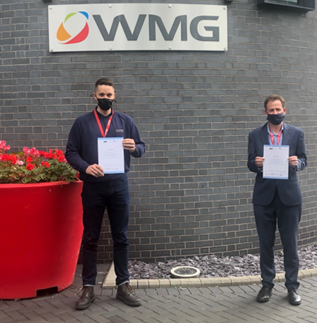 A group of WMG staff have been presented with personalised certificates of appreciation from the Ventilator Challenge UK in recognition of their hard work during the Covid19 pandemic.
A group of WMG staff have been presented with personalised certificates of appreciation from the Ventilator Challenge UK in recognition of their hard work during the Covid19 pandemic.
In summer 2020, WMG was part of a consortium that helped to produce a total of 13,437 Penlon ESO 2 and Smiths paraPAC ventilator devices for the NHS.
WMG staff operated a quality control facility in an automotive parts warehouse in Solihull with colleagues from other High Value Manufacturing Catapult centres - the National Composites Centre (NCC) and the Manufacturing Technology Centre (MTC). Together they worked around the clock tirelessly inspecting over eight million parts.
Dr Mark Swift, Head of WMG SME Group, said: “It’s once again great to see WMG involved in such a nationally important project. The team have done a fantastic job of showcasing our continuous ability to collaborate and support business. This recognition is well deserved and is a testament to our capabilities.”
The 12 strong team included Dave Cooper, Paul Charlton, Ricky Nestor, Lee Oldham, Divyesh Mistry, Max Raybone, Joe Ward, Luke Millage, Myles Vale, Simon Fox, Steve Leemoon and Mark Swift.
Read more about the WMG SME Group here: WMG SME Group | How can we help you? (warwick.ac.uk)
Electric vehicles could be powered by Hydrogen harvested from sewage
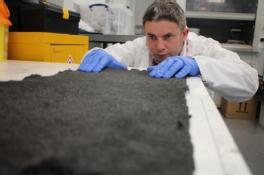 Hydrogen is valuable as it is a renewable source, and could be sold to the chemicals and plastics industry or used in hydrogen fuel cells for energy storage or electric vehicles
Hydrogen is valuable as it is a renewable source, and could be sold to the chemicals and plastics industry or used in hydrogen fuel cells for energy storage or electric vehicles- The ability to take hydrogen from waste water provides a new economic and environmental opportunity, however until now it has been incredibly expensive to suffice
- Using a recycled carbon fibre mat, researchers from WMG, University of Warwick, have been able to produce Hydrogen from wastewater for Severn Trent
Wastewater treatment is vital to remove pathogens, but is incredibly energy intensive. The ability to treat it more sustainably is a challenge researchers from WMG, University of Warwick have been able to achieve, using recycled carbon fibre mats to produce hydrogen from waste water.
Treating wastewater is a vital process, as it removes pathogens and protects the environment, however this comes at its own environmental cost, as it is highly energy intensive, using around 3% of energy use in the UK – the equivalent to 13 billion kilowatt hours.
The water and waste company Severn Trent set researchers from WMG, University of Warwick, the challenge of finding a more energy efficient way to treat wastewater, with the team successfully building on research into Microbial Electrolysis Cells.
Microbial Electrolysis Cells involves using electromagnetic microorganisms to break down organic pollutants in waste water, producing clean water and hydrogen gas. The ability to produce Hydrogen gas is valuable in itself as it can be sold to chemical and plastics industry, or for use in hydrogen fuel cells for energy storage or electric vehicles.
Although this all sounds promising it hasn’t been developed on an industrial scale, as the anode materials - which are used in the reaction to breakdown the organic pollutants – are made of graphite or carbon, and cost several hundred pounds per square metre, and produce low rates for Hydrogen.
Dr Stuart Coles and his team therefore took on the challenge of refining the technique by looking at alternative anode materials and processing methods, and successfully identified recycled carbon fibre mats as an alternative anode, which costs only £2 per square metre, making it significantly cheaper than existing anode materials.
After testing the carbon fibre mats on synthetic wastewater and real wastewater, researchers found the bacteria developed on the recycled carbon fibre anode, which had better temperature tolerance and produced more hydrogen than previously used materials.
They then decided to pilot their techniques at Severn Trent’s Minworth waste treatment site, where they successfully processed up to 100 litres of wastewater per day and managed to remove 51% of organic pollutants and up to 100% of suspended solids from the water while producing 18 times more hydrogen (at 100% purity) than the graphite material.
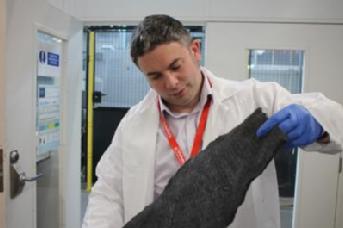 Dr Stuart Coles, from WMG, University of Warwick comments:
Dr Stuart Coles, from WMG, University of Warwick comments:
“We are really excited about this technology. By taking waste from the automotive and aerospace sectors, we have developed a circular solution to a longstanding problem. Instead of just treating the wastewater, we are now able to extract value from it in the form of hydrogen at a lower cost than ever before.
“The next phase of this work is look at optimising the design of the microbial electrolysis cells and further reduce the level of pollutants in the water. This in turn should help produce even more hydrogen!”
Bob Stear, Chief Engineer at Severn Trent adds:
“The performance boost and cost savings demonstrated from this research mean that MEC technology is one step closer to being cost competitive with existing wastewater treatment assets. WMG have also demonstrated that this technology has the potential to create a more circular wastewater treatment process which will be essential to delivering on our long term sustainability goals and Net Zero plans. We’re currently scoping scaling up the technology at our test-bed plant in Redditch.”
ENDS
2 NOVEMBER 2021
NOTES TO EDITORS
High-res images available at:
https://warwick.ac.uk/services/communications/medialibrary/images/september_2021/img_1054.jpg
Caption: Dr Stuart Coles from WMG, University of Warwick with graphene
Credit: WMG, University of Warwick
https://warwick.ac.uk/services/communications/medialibrary/images/september_2021/img_1054.jpg
Caption: Dr Stuart Coles from WMG, University of Warwick with graphene
Credit: WMG, University of Warwick
https://warwick.ac.uk/services/communications/medialibrary/images/september_2021/img_1043.jpg
Caption: Dr Stuart Coles from WMG, University of Warwick with graphene
Credit: WMG, University of Warwick
https://warwick.ac.uk/services/communications/medialibrary/images/september_2021/img_1058.jpg
Caption: A sample of a roll of graphene
Credit: WMG, University of Warwick
For further information please contact:
Alice Scott
Media Relations Manager – Science
University of Warwick
Tel: +44 (0) 7920 531 221
E-mail: alice.j.scott@warwick.ac.uk
Exercise fell during lockdown particularly for groups most at risk
· During the COVID-19 March-June 2020 lockdown in the UK everyone was encouraged to stay at home and only leave the house once a day to exercise
· A study of UK residents has found that groups including those who are BAME, obese and/or city dwellers reported a greater reduction in physical activity during the lockdown than other groups
· The research highlights the need for targeted interventions to ensure that physical and mental health impacts of sedentary behaviour are not exacerbated over the long-term by significant reductions in physical activity identified in groups who are more vulnerable to COVID-19
 A study of UK resident’s exercise patterns during the COVID-19 lockdown in March-June 2020, has found that groups that were most at risk to the adverse effects of COVID-19 were impacted the most in terms of reducing their levels of exercise. Researchers led by WMG, University of Warwick say targeted interventions are required to ensure physical and mental health impacts of sedentary behaviour do not exacerbate the risks to these groups.
A study of UK resident’s exercise patterns during the COVID-19 lockdown in March-June 2020, has found that groups that were most at risk to the adverse effects of COVID-19 were impacted the most in terms of reducing their levels of exercise. Researchers led by WMG, University of Warwick say targeted interventions are required to ensure physical and mental health impacts of sedentary behaviour do not exacerbate the risks to these groups.
When the first UK lockdown was announced in March 2020 to prevent the spread of COVID-19, all UK residents were permitted to leaving the house to exercise once a day. Researchers from WMG, University of Warwick decided to investigate which population groups had reduced or increased physical activity levels during the lockdown.
In the paper, 'Stay at Home and Stay Active? The impact of the stay-at-home restrictions on physical activity routines in the UK during the COVID-19 pandemic' , published in the Journal of Sports Sciences, researchers led by WMG, University of Warwick have found that in some of the most at-risk groups their level of physical activity was substantially decreased.
Researchers surveyed UK residents through a rewards-for-exercise app called Sweatcoin, and an online panel. The Sweatcoin app users provided data of their daily step count prior to and during the March-June 2020 lockdown.
Researcher’s key findings show that there was a particular reduction in physical activity in those classed as obese, gym users, and people living in urban areas. All groups had a decreased step count during the restrictions, however this was particularly prominent in BAME (Black, Asian and Minority Ethnic) groups and urban dwellers.
Dr Mark Elliott from WMG, University of Warwick comments:
“Our study wanted to determine which groups had managed to exercise more during the 2020 lockdown and which had struggled to maintain their usual exercise routines. It became clear that people living in rural areas were more likely to have increased levels of physical activity, compared to city dwellers. However, groups that were particularly vulnerable to COVID-19, such as BAME and obese, had significantly reduced their physical activity during the lockdown compared to before the restrictions were put in place.
“The long duration of the lockdowns can mean it is difficult for people to return to their old routines, and therefore, there should be targeted interventions to ensure that the already significant issue of sedentary behaviour doesn’t become exacerbated by the effects of the pandemic.”
